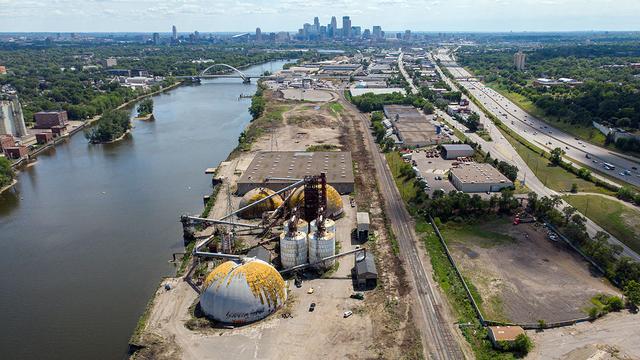Bonnie Keeler, an associate professor at the Humphrey School of Public Affairs, has received a three-year grant from the Environmental Protection Agency (EPA) to research the value of a cleaner Mississippi River.
This is one of four research grants the EPA announced Wednesday that will assess the benefits of water quality improvements, with the goal of informing federal water policy.
Keeler, an expert on water management and policy, is the lead investigator of the $742,000 project, "Investigating the distribution and value of water quality benefits along the Mississippi River." She’s collaborating with researchers from Michigan State University and the University of Washington.
“At EPA, we know that when we take action to protect and improve our water resources, communities see economic and environmental benefits in return. That’s why the Agency is supporting research to improve the scientific basis behind the measurement of these benefits,” said Chris Frey, assistant administrator for EPA’s Office of Research and Development. “The research funding announced today will help communities and environmental experts better estimate the costs and benefits of improved local water conditions, especially in underserved and overburdened communities.”
Why the Mississippi River?
At more than 2,300 miles long, the Mississippi is one of the great commercial waterways of the world thanks to decades of investments in infrastructure, including a network of locks, dams, levees, dikes, and diversions. The river provides opportunities for fishing, recreation, and commerce, along with drinking water for more than 20 million people.
“In Minnesota, we are connected to Mississippi River communities all the way from the headwaters in Itasca, Minnesota, to Louisiana and the Gulf of Mexico,” said Keeler. “What happens to the river impacts the culture, health, safety, transportation, and economic development for tens of millions of residents along the corridor.”
But Keeler notes that management of the Mississippi is complicated by a network of overlapping jurisdictions, conflicts over property rights, and tradeoffs between recreation, fishing, shipping, and agricultural sectors. The river and its neighboring communities also face threats from agriculture, industry, and climate change – threats that disproportionately burden low-income populations and communities of color.
Some examples of environmental injustice include increased flooding and the construction of oil pipelines, industrial plants, and waste disposal sites in disadvantaged neighborhoods.
The development of big-ticket restoration projects along urban riverfronts, such as the Upper Harbor Terminal project in Minneapolis and initiatives in Memphis and New Orleans, must also be seen through an equity lens, Keeler said. “These investments are designed to reconnect communities to the river, but they also threaten nearby low-income neighborhoods with gentrification and displacement.”
Novel research methods
Traditional economic tools to estimate the benefits of improved water quality often fail to address issues of equity and rely solely on monetary values that overlook important relational and cultural values. So Keeler’s team will seek to understand how different communities perceive the benefits and costs of a changing Mississippi River.
The team will use several strategies to reach affected river communities, including social media data and mobile technologies. Researchers will also visit a number of cities along the Mississippi River to document the environmental justice priorities in those communities related to the river.
“We will prioritize building those relationships, to understand water and environmental justice issues through the eyes of community members,” said Keeler, “and will identify ways to support these communities in their advocacy through maps, fact sheets, issue briefs, and other data products. By pairing those diverse perspectives with our interdisciplinary research methods, we hope to better understand and communicate complex social-ecological systems.”
Potential impact
The results of this research have the potential to directly inform how government agencies and other entities prioritize resources, balance efficiency and equity, communicate the value of these investments to the public, and evaluate the costs and benefits of alternative policies.
“New federal funding has the potential to pump millions of dollars into restoration and infrastructure improvements over the next several decades, but the environmental justice implications of those investments are uncertain,” Keeler said. “Our research aims to center environmental justice concerns of local communities in federal policy making.”
This project is part of a long-term investment to build relationships with practitioners and community leaders that will lead to a lifetime of research and engagement on the social and ecological dynamics of the Mississippi River.



